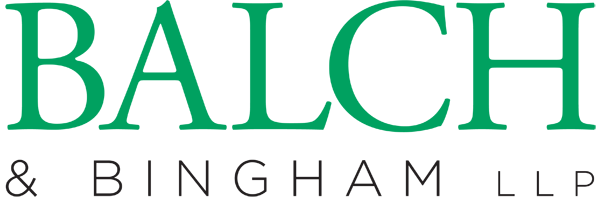On March 27, 2020, President Trump signed into law the Coronavirus Aid, Relief, and Economic Security (CARES) Act. Below is a summary of the Act and describes who it will affect and how it will apply.
Relief for Businesses - Option to defer the 6.2% tax paid on wages that is used to fund Social Security. Employers would be required to repay the deferred tax over the next two years (50% repayment by December 31, 2021; remaining 50% repayment by December 31, 2022).
Small Business Loans - Up to $350 billion in emergency loans for small businesses affected by COVID-19. Severely Distressed Sectors – CARES authorizes $500 billion for loans, loan guarantees, and other investments in support of eligible businesses. It creates an inspector general and an accountability committee to oversee how the money is spent.
- Up to $25 billion available for loans and loan guarantees to passenger air carriers and other eligible businesses under 14 C.F.R. § 145.
- An additional $150 billion is provided for secured lending or loan guarantees to assist other critical sectors of the U.S. economy experiencing severe financial distress due to the COVID-19 outbreak.
- Up to $4 billion available in loans and loan guarantees for cargo air carriers.
- Up to $17 billion in loans and loan guarantees for businesses critical to national security.
Labor, Health and Human Services, Education - $100 billion in direct grants to health care institutions (hospitals, public entities, nonprofits, and Medicare and Medicaid enrolled suppliers and institutional suppliers). Includes a 20% bump in Medicare payments for treating coronavirus patients.
Relief for Individuals and Families - Individual payments of $1,200 for individuals and $2,400 for couples. The payments are reduced for individuals with incomes over $75,000 (or $150,000 for couples) and provides an additional $500 per child. The payments are eliminated for those with an income over $99,000 ($198,000 for couples).
Relief for Businesses
- Corporations may postpone estimated tax payments due after the date of enactment until October 15, 2020. There is no cap on the amount of tax payments postponed.
- Employers and self-employed individuals may defer payment of the employer share of the Social Security tax. The deferred employment tax must be paid over the following two years, with half of the amount required to be paid by December 31, 2021 and the other half by December 31, 2022. The Social Security Trust Funds will be held harmless under this provision.
- Companies permitted to carry back net operating losses (NOLs) from 2018, 2019, and 2020 for five years. NOLs are currently subject to a taxable income limitation, and they cannot be carried back to reduce income in a prior tax year. This provision also temporarily removes the taxable income limitation to allow an NOL to fully offset income.
- This rule is extended to pass-through entities and sole-proprietorships.
- Corporations permitted to recover AMT tax credits under the Tax Cuts and Jobs Act at an accelerated pace.
- Increase the 30-percent limitation on business expense deductions to 50 percent of the taxable income for 2019 and 2020.
- Excludes cancellation of debt related to new, emergency small business loans from income.
- Hospitality and other businesses are permitted to immediately write off costs associated with improving facilities instead of having to depreciate those improvements over the 39-year life of the building.
Small Business Loans
- Authorizes the creation of a small business interruption loan program and appropriate $350 billion for the program to stabilize small business interruptions.
- The U.S. government would provide a 100% guarantee on any qualifying small business interruption loan.
-
Qualifying loan terms:
- Eligible borrowers: Employers with 500 employees or less (phased out)
- Loan amounts: 100% of 6 weeks of payroll, capped at $1540 per week per employee (approx. $80,000 annualized). Max loan amount $10 million.
- Borrower requirement: Employee compensation must be sustained for all employees for 8 weeks from the date the loan is disbursed.
- Lender: U.S. financial institutions
- Streamlined underwriting process: Lender verifies the previous 6-week payroll amount and later verifies that the borrower has paid 8 weeks of payroll from date of disbursement.
- Authority for the Treasury Department to issue regulations establishing appropriate interest rate, loan maturity, and other relevant terms and conditions.
Severely Distressed Sectors
Economic Stabilization
- $500 billion broadly available for loans with restrictions:
- Companies will not be allowed to buy back stock during the time the loan is outstanding and until one year after it is paid back.
- Companies will also have to limit executive bonuses.
- The terms of the loans will be made public by the Treasury, and will be reviewed by a five-member panel of congress.
- Businesses controlled by the President, Vice President, Members of Congress, and heads of Executive Departments will be prohibited from receiving these loans or investments from Treasury programs.
- Temporarily suspends the statutory limitation on the use of the Exchange Stabilization Fund (Section 131 of the Emergency Economic Stabilization Act of 2008) for guarantee programs for the United States money market mutual fund industry.
- Sunset date: Terminates the authority to establish any new money market mutual fund guarantee program upon the conclusion of the National Emergency Concerning the Coronavirus Disease 2019 (COVID-19) Outbreak declared by the President on March 13, 2020.
Banking
- Community Bank Leverage Ratio lowered to 8% during the public health emergency.
- Banks may elect to suspend requirement under GAAP for loan modifications related to the pandemic that would otherwise be categorized as a troubled-debt restructurings and suspend the determination that a loan is a troubled debt restructuring.
- Banks are relieved from compliance with rules related to measurement of current expected credit losses during the pandemic.
- Places a moratorium on foreclosures of federally-backed mortgage loans, and gives consumers the ability to request a forbearance in the event of delinquency.
Airlines
- $61 billion in relief for air carriers (passenger and cargo), employees and contractors.
- $10 billion in relief for airports.
- Suspend aviation excise taxes on passenger airline tickets, transportation of property by air, and kerosene used in commercial aviation until the end of 2020.
- Includes suspension of fuel tax and cargo tax.
Labor, Health and Human Services, Education
- $150 billion in funding for hospitals, research, treatment and the Strategic National Stockpile to raise supplies of ventilators, masks and other equipment.
- $100 billion: direct aid to hospitals, public entities, nonprofits, and Medicare and Medicaid enrolled suppliers and institutional providers
- $16 billion: replenish theStrategic National Stockpile supplies of pharmaceuticals, personal protective equipment and other medical supplies
- $3.5 billion: Biomedical Advanced Research and Development Authority
- $4.3 billion to support federal, state, and local public health agencies to prevent, prepare for, and respond to the coronavirus
- $1 billion to bolster domestic supply chains, enabling industry to quickly ramp up production of personal protective equipment, ventilators and other urgently needed medical supplies
- $425 million to increase access to mental health services in communities
- $250 million to expand the Hospital Preparedness Program’s support of emergency preparedness
- $4.3 billion in CDC funding for public health preparedness and response for surveillance, diagnostics, laboratory support, and information campaigns.
- $30 billion in Department of Education funding for state and local school districts as well as institutions of higher learning.
- $900 million to the Low Income Home Energy Assistance Program (LIHEAP) to support immediate home energy assistance for low-income households affected by coronavirus.
- Permits high-deductible health plans (HDHPs) with health savings accounts (HSAs) to cover telehealth services prior to a patient reaching the deductible.
- Permits patients to use funds in HSAs and Flexible Spending Accounts for the purchase of over-the-counter medical products without a prescription from a physician.
- Allows patients with HDHPs to use HSA funds to pay the monthly fee to a “direct primary care” physician practice that typically provides more remote care, including telehealth.
- Permits Federally Qualified Health Centers and Rural Health Clinics to furnish telehealth services to beneficiaries in their home or other setting. Medicare reimburses for these services at a composite rate similar to payment provided for comparable telehealth services under the Medicare Physician Fee Schedule.
- Provides prompt economic assistance to health care providers on the front lines fighting the COVID-19 virus, by temporarily lifting the Medicare sequester, which reduces payments to providers by 2 percent, through December 31, 2020, boosting payments for hospital, physician, nursing home, home health, and other care. The Medicare sequester would be extended by one-year beyond current law to provide immediate relief without worsening Medicare’s long-term financial outlook.
- Increases the payment that would otherwise be made to a hospital for treating a patient admitted with COVID-19 by 15 percent. It would build on the CDC decision to expedite use of a COVID-19 diagnosis to enable better surveillance as well as trigger appropriate payment for these complex patients.
- Prevents a scheduled decrease in payment amounts for durable medical equipment, which helps patients transition from hospital to home and remain in their home, through the length of COVID-19 public health emergency.
- Permits state Medicaid programs to pay for learning programs that enable specialists to train and consult with providers in rural and underserved areas on treating COVID-19 and other public health emergencies.
- Allows state Medicaid programs to pay for direct support professionals, caregivers trained to assist with activities of daily living, provided to disabled individuals in the hospital.
- Establishes a separate Medicare payment to hospitals for when administering a qualified antibiotic or antifungal medicine to treat a serious or life-threatening infection, helping to prevent the spread of serious infection. A hospital must participate in a CDC stewardship program to receive the separate payment, which would be in place for a five-year period with an evaluation of the impact.
- Requires Medicare to make quicker coding, coverage, and payment determinations when the Food and Drug Administration approves truly novel drugs and devices.
- Provides relief from the Obamacare employer mandate during the COVID-19 emergency, giving a reprieve to employers like grocers and some restaurants that may have to temporarily increase some staffing hours to meet demand.
Relief for Individuals and Families
- Direct payments to individual taxpayers, to be administered by the IRS and Bureau of the Fiscal Service.
- Payment amounts would be fixed and tiered based on income level and family size.
- Payments begin to phase out at $75,000 annual income per individual and $150,000 per joint filer. The phase out would scale down until it reached an annual income threshold of $99,000 ($198,000 for joint filers), where it would phase out altogether.
- Maximum unemployment benefit will be increased by $600 per week (above what the state provides) to ensure laid-off workers, on average, will receive their full pay for four months.
- Expands the types of workers covered under the unemployment insurance scheme.
- Places a moratorium on eviction filings for 120 days from the date of enactment for properties subject to certain federal programs.
- Waives the 10 percent early withdrawal penalty for any “coronavirus-related distribution” up to $100,000.
- Income from the distribution will be taxed over three years from date the distribution was received.
- Distribution may be repaid over three years without triggering that year’s cap on contributions.
- A “coronavirus related distribution” is a distribution from an eligible retirement fund taken between January 1, 2020 and December 31, 2020 for an individual affected by the coronavirus.






